In 1908, a powerful explosion occurred in the sky above the basin of the Pidkamyana Tunguska River, which felled a forest over an area of several thousand square kilometers. Many scientific articles and hypotheses have been devoted to this event, the authors of which have tried to reveal the nature of the exploded body.
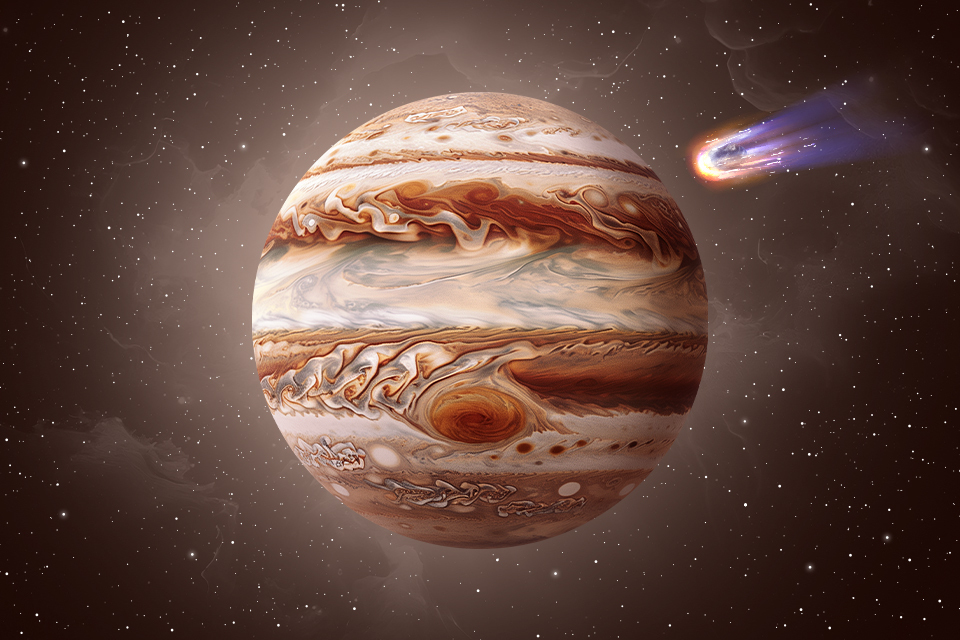
But many people forget that in the twentieth century, a much grander collision occurred, the likes of which no living person had ever seen before. Only it took place not on Earth, but on Jupiter. In July 1994, the gas giant was bombarded by the debris of Comet Shoemaker-Levy 9. On the occasion of the 30th anniversary of this event, Universe Space Tech team recalls how the collision of the century took place.
The discovery of Comet Shoemaker-Levy 9
It all began on March 24, 1993, when the couple Eugene and Carolyn Shoemaker and their colleague David Levy once again took pictures of the night sky using the 46-centimeter Schmidt telescope installed at the Palomar Observatory. At the time, nothing predicted a scientific sensation to come. The Shoemaker and Levy spouses were experienced enough in their craft of searching for tailed stars, having recorded eight short-period comets.

After reviewing the images taken that night, astronomers realized that they had found their ninth comet. According to the rules, it was named Shoemaker-Levy 9. The researchers immediately noticed two details. First, the comet did not look like a single object in the images, but rather a series of fragments moving one after the other. And second, it was very close to Jupiter.
Further observations showed that this was no coincidence. Shoemaker-Levy 9 was captured by Jupiter’s gravity and was in an elongated orbit around the gas giant. It is unknown when the capture took place. Presumably, it happened sometime in the late 1960s or early 1970s.
But astronomers were able to determine exactly when Shoemaker-Levy 9 collapsed. It happened in June 1992, when it passed at a distance of 40 thousand kilometers from Jupiter. Initially, the comet had a diameter of about 5 km. During the approach, the gravity of the gas giant split it into 21 fragments, the largest of which was 2 km in size.
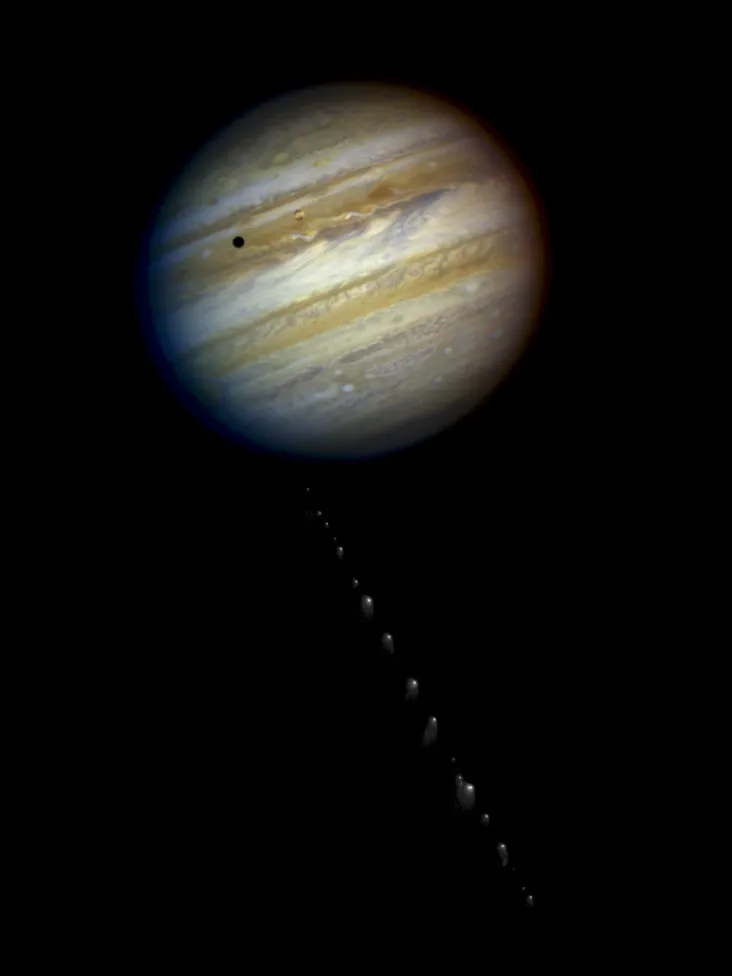
But that was not the most important thing. Calculations showed that in July 1994, the debris of Shoemaker-Levy 9 would enter Jupiter’s atmosphere.
The collision of the century
The news of the upcoming fall of Shoemaker-Levy 9 debris to Jupiter was a world-class sensation. Of course, it was common knowledge that planets collide with comets and asteroids from time to time. But astronomers had never seen such an event live, let alone one involving such a large body. If the debris from Shoemaker-Levy 9 had fallen to Earth, it would have caused a global catastrophe, most likely leading to mass extinction.
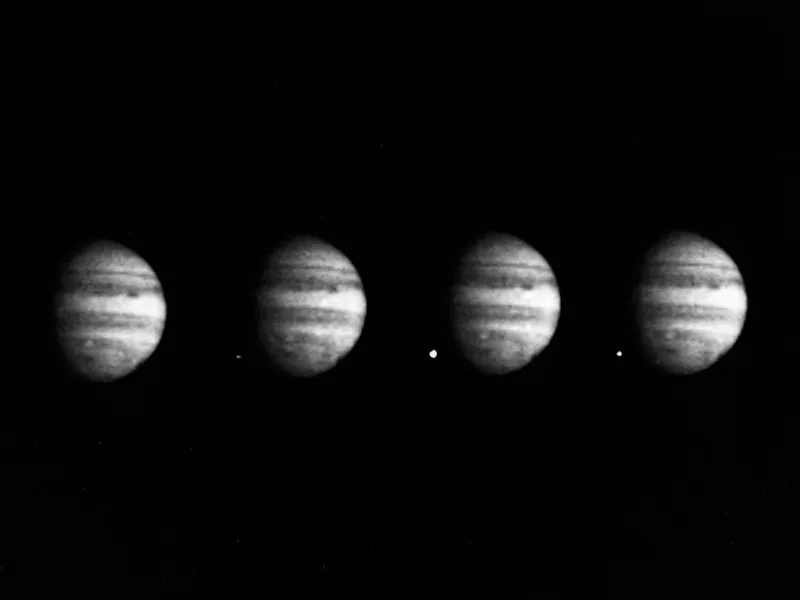
However, since the comet did not fall on Earth, but on Jupiter, whose volume is 1321 times greater than that of the Earth, and which has no solid surface, many scientists openly doubted that the gas giant would “notice” the impact and we would have visible traces. However, other assumptions were made. Some researchers hoped to see giant fireballs when the comet fragments enter Jupiter’s atmosphere. And some even assumed that the impact would lead to a huge release of matter that would form new rings around Jupiter.
In any case, astronomers tried to approach the upcoming event fully prepared. All the largest telescopes of the time were aimed at Jupiter. Spacecraft were also involved. One of the leading roles was assigned to the Hubble telescope — fortunately, it had already been repaired at that time and could conduct observations at full capacity. Great expectations were also placed on the Galileo probe, which was flying to Jupiter. The fact is that due to its position, it was the only one that could see the moment of the collision (the debris was supposed to fall on the planet’s hemisphere hidden from Earth).
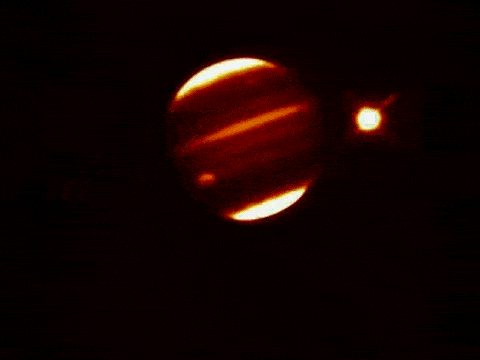
The first fragment entered Jupiter’s atmosphere on July 16. In the following days, it was followed by other fragments. The biggest impact occurred on July 18, when a 2-kilometer comet fragment fell to Jupiter. Scientists estimate that the energy released during this impact was equivalent to 6 million megatons. The last fragment of Shoemaker-Levy 9 entered the atmosphere of the gas giant on July 22.
Consequences of the comet impact
The consequences of the bombardment of Jupiter far exceeded all astronomers’ expectations. Telescopes recorded giant fireballs that appeared in the planet’s atmosphere at the time of the impact. Their temperature exceeded 30 thousand degrees. The impacts created giant plumes of material from the lower layers of Jupiter’s atmosphere, which rose three thousand kilometers above the cloud tops into the stratosphere. They were observed by Hubble and ground-based observatories.
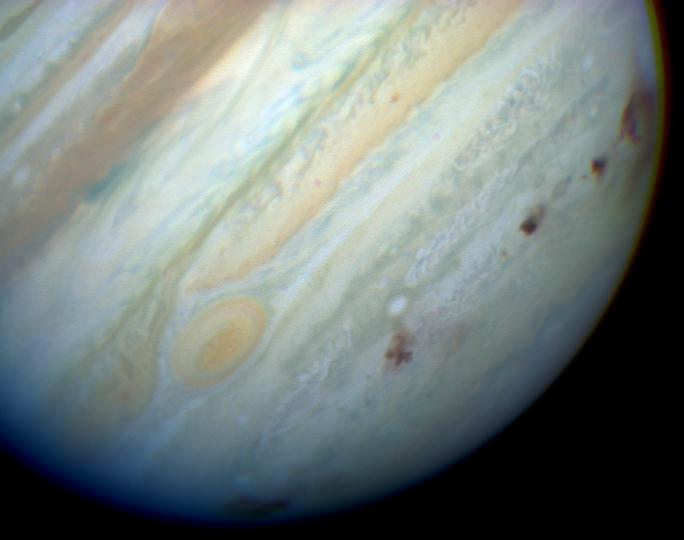
But the matter was not limited to this. After the bombardment, Jupiter received numerous “scars” – huge dark spots that marked the places where the debris fell. The diameter of the largest of them was equal to the diameter of the Earth – it was more visible through telescopes than the famous Great Red Spot. It took several months before the spots finally dissipated.
Astronomers also managed to find a number of new chemical compounds in Jupiter’s atmosphere. Some were formed during the impact, while others were lifted from the planet’s lower layers. Abnormal fluctuations in the temperature of Jupiter’s stratosphere were also recorded.
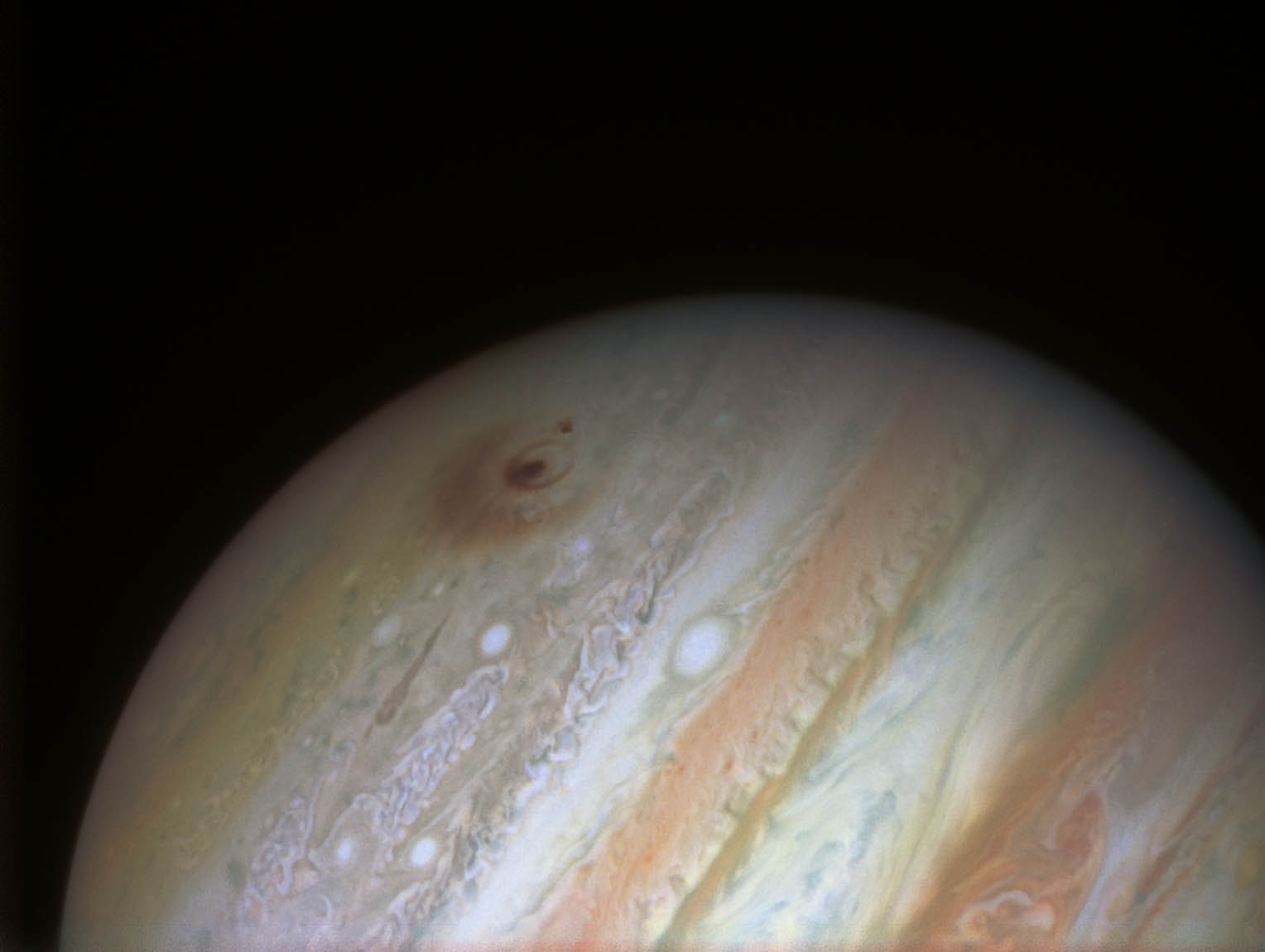
The bombardment of Jupiter had a number of indirect consequences. It showed that large collisions still occur in the solar system, quite capable of destroying life on Earth. This has led NASA and other space agencies to pay much more attention to planetary security and the search for objects that pose a potential threat to the Earth. A number of mission projects were also launched to study asteroids and comets. So projects like DART are a direct legacy of the Shoemaker-Levy 9 crash.
Despite the fact that 30 years have passed since those events, the bombardment of Jupiter is still unparalleled in terms of scale. In the following years, astronomers recorded the fall of several objects on Jupiter, but they did not compare to the events of 1994.
A study conducted in 2009 showed that objects with a diameter of 0.5 to 1 km fall to Jupiter once every 50 to 350 years. According to another study, comets with a diameter of 1.6 km collide with the gas giant once every 6,000 years. So, astronomers are very lucky to witness such a rare event. And we are lucky that the Earth was not its victim.

